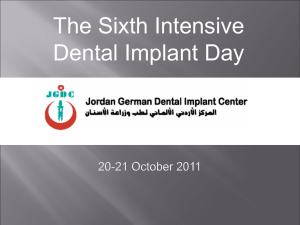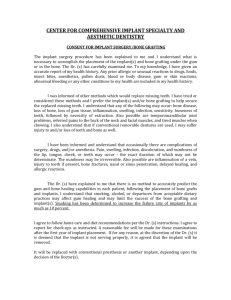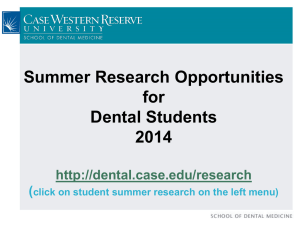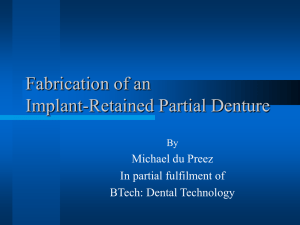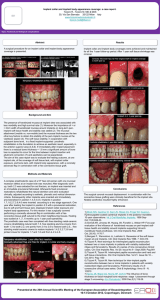Bury Dental Centre Brook House 10a Wash Lane Bury, BL9 6AS
advertisement
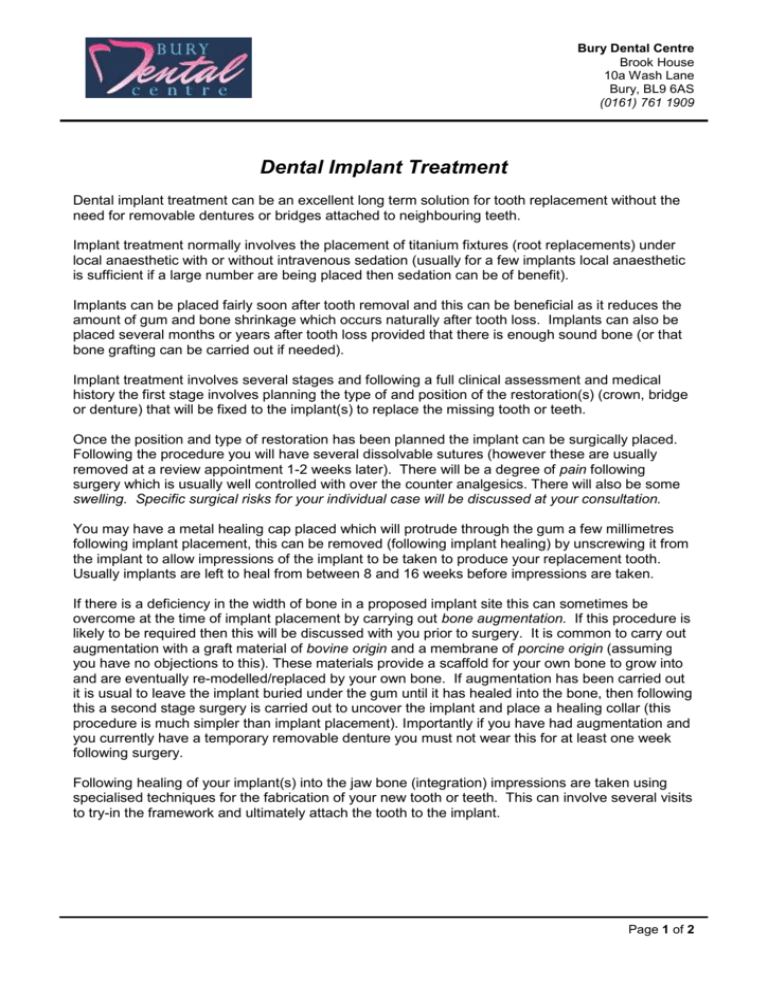
Bury Dental Centre Brook House 10a Wash Lane Bury, BL9 6AS (0161) 761 1909 Dental Implant Treatment Dental implant treatment can be an excellent long term solution for tooth replacement without the need for removable dentures or bridges attached to neighbouring teeth. Implant treatment normally involves the placement of titanium fixtures (root replacements) under local anaesthetic with or without intravenous sedation (usually for a few implants local anaesthetic is sufficient if a large number are being placed then sedation can be of benefit). Implants can be placed fairly soon after tooth removal and this can be beneficial as it reduces the amount of gum and bone shrinkage which occurs naturally after tooth loss. Implants can also be placed several months or years after tooth loss provided that there is enough sound bone (or that bone grafting can be carried out if needed). Implant treatment involves several stages and following a full clinical assessment and medical history the first stage involves planning the type of and position of the restoration(s) (crown, bridge or denture) that will be fixed to the implant(s) to replace the missing tooth or teeth. Once the position and type of restoration has been planned the implant can be surgically placed. Following the procedure you will have several dissolvable sutures (however these are usually removed at a review appointment 1-2 weeks later). There will be a degree of pain following surgery which is usually well controlled with over the counter analgesics. There will also be some swelling. Specific surgical risks for your individual case will be discussed at your consultation. You may have a metal healing cap placed which will protrude through the gum a few millimetres following implant placement, this can be removed (following implant healing) by unscrewing it from the implant to allow impressions of the implant to be taken to produce your replacement tooth. Usually implants are left to heal from between 8 and 16 weeks before impressions are taken. If there is a deficiency in the width of bone in a proposed implant site this can sometimes be overcome at the time of implant placement by carrying out bone augmentation. If this procedure is likely to be required then this will be discussed with you prior to surgery. It is common to carry out augmentation with a graft material of bovine origin and a membrane of porcine origin (assuming you have no objections to this). These materials provide a scaffold for your own bone to grow into and are eventually re-modelled/replaced by your own bone. If augmentation has been carried out it is usual to leave the implant buried under the gum until it has healed into the bone, then following this a second stage surgery is carried out to uncover the implant and place a healing collar (this procedure is much simpler than implant placement). Importantly if you have had augmentation and you currently have a temporary removable denture you must not wear this for at least one week following surgery. Following healing of your implant(s) into the jaw bone (integration) impressions are taken using specialised techniques for the fabrication of your new tooth or teeth. This can involve several visits to try-in the framework and ultimately attach the tooth to the implant. Page 1 of 2 Bury Dental Centre Brook House 10a Wash Lane Bury, BL9 6AS (0161) 761 1909 Restorative considerations/limitations During your consultation the possible results of implant treatment will be discussed with you depending on your individual case. Following tooth loss there is inevitable loss of gum and bone soon after tooth removal. Implant placement can reduce this loss; however there is usually some loss of bone height and width and often loss of gum in the space where the tooth used to be. With grafting/augmentation sometimes it is possible to improve this loss but often there is an aesthetic compromise, we will discuss if this impacts you at your consultation. For example an implant replaced tooth may have a longer ‘neck’ than its neighbouring tooth, but if your lip covers this or the discrepancy is small it may not matter. Disadvantages of implant treatment Long term clinical data reveals that the prognosis for implant treatment is very high, however in cases where teeth are lost to aggressive periodontal disease (you will be informed if this applies to you) the prognosis is reduced and it is not possible to guarantee how long implants will last. Research has also shown that smoking is a risk factor for the long term success of implants well as the gum surrounding the natural teeth) and therefore you should not take up smoking. Medical conditions such as diabetes can affect initial and long term success with dental implants. Development of habits such as nocturnal tooth grinding can in some cases reduce the lifespan of the crown or bridge held in by implant(s) or even the implants themselves as well as the natural dentition. The factors that you are entirely responsible for that can determine success of implant treatment will depend mainly on your ability to maintain very high levels of oral hygiene and plaque control measures long term. You will need to attend the dentist at 3-6 monthly intervals to ensure good periodontal/perimplant condition is maintained around your implant fixture(s) and remaining natural teeth. If you have any questions please do not hesitate to contact us. Page 2 of 2


